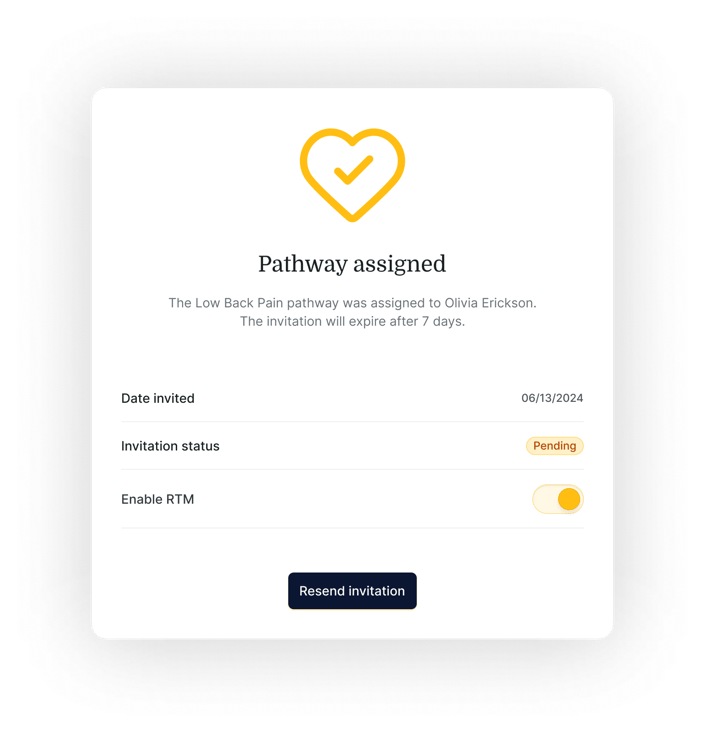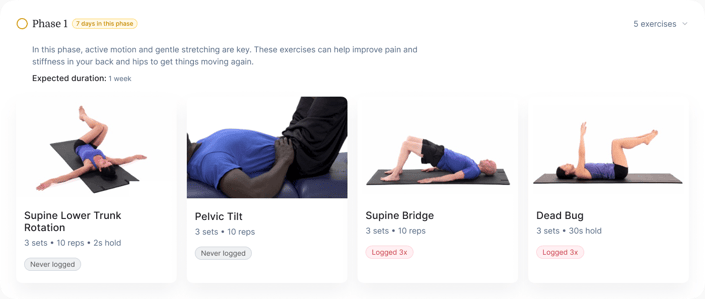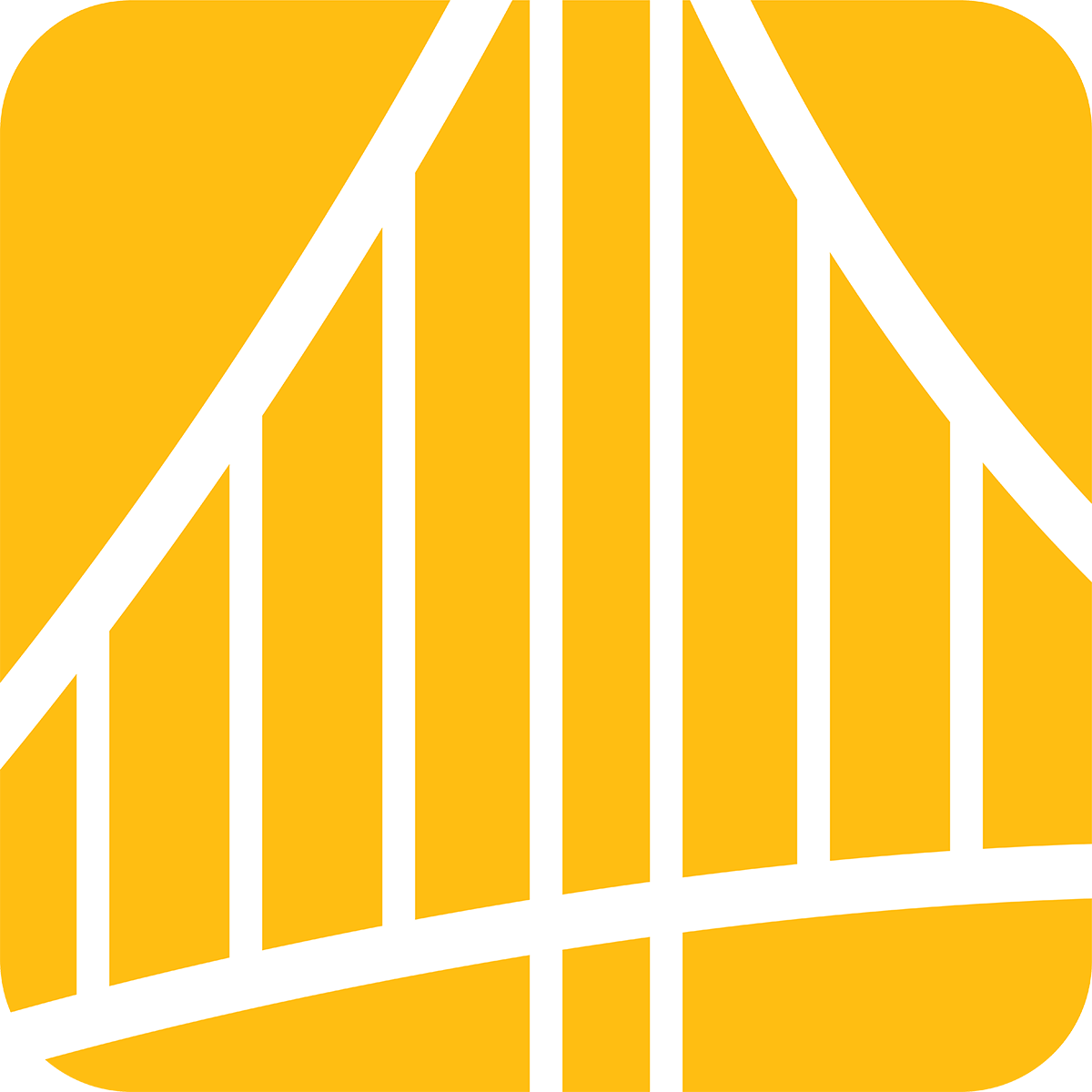Olivia's Story: How Hybrid Care Pathways Work for Patients and Clinicians
Olivia is a busy mother of three whose low back pain is affecting both her ability to sit at her desk for long periods and to pick up her kids. She knows PT will help, but she doesn’t have time to drive to a clinic three times a week. So what can Olivia do? Enter Pathways.
May 6, 2025
9 min. read

Physical therapy (PT) is an effective, safe, and versatile option for patients seeking care for musculoskeletal (MSK) conditions, regardless of whether that patient is seen in-clinic or digitally.1 However, traditional models of care are struggling to keep pace with the number of patients who need care for musculoskeletal (MSK) conditions. Only ~20 percent of patients are being referred to therapy, ~40 percent never seek care, and the rest end up in other service lines, creating capacity and cost issues.2
Hybrid care platforms like Medbridge Pathways are bridging this gap by offering a digital solution to manage a variety of common conditions. With Pathways, clinicians can deliver effective, progressive, and engaging clinical programs spanning musculoskeletal injuries to orthopedic pre- and post-op surgery, pelvic health, and fall prevention. Pathways incorporates assessments, exercises, AI-powered motion capture for accurate progress tracking, and education, offering patients the flexibility to manage their care from the comfort of their homes.
But what does Pathways look like in action?
Let’s take a look at Olivia, a busy mother of three who juggles her responsibilities as a full-time employee and a caregiver. Her low back pain, which has persisted for several months, is becoming more than just a minor inconvenience. It’s beginning to affect her ability to work at her desk for long periods and to take care of her kids—she struggles to pick up her youngest daughter and play with her two boys. She knows physical therapy will help, but she doesn’t have time to drive to a clinic three times a week.
So what can Olivia do?
Scenarios like this play out across the country every single day. But with hybrid care platforms like Pathways, Olivia’s clinician can prescribe a program with the flexibility of home-based care while maintaining a high level of clinical oversight.
The Initial Consultation: Why Pathways?
When Olivia visits her physical therapist (PT) after being referred by her primary care doctor, the PT assesses her condition, as well as other considerations like schedule, commute, and insurance. The PT determines that she is a good candidate for a Low Back Pain Pathway and assigns the program, scheduling an in-person or virtual PT follow-up visit in two weeks.

The PT explains to Olivia that Pathways is a digital, guided care program designed specifically to help patients like her recover at their own pace that fits in with their busy schedule. The program consists of different phases, each progressively building on the last, so Olivia can start at her current level of ability and gradually increase her activity as she improves. This phased approach is particularly beneficial for patients with painful conditions like Olivia’s, as it allows for gradual improvements while minimizing the risk of overexertion.
In addition to personalized exercises, Pathways includes education on managing her specific condition—low back pain—and offers AI-powered motion capture assessments. These assessments track her movements and allow the PT to monitor her progress remotely, adjusting the program as needed. The PT will be tracking and monitoring Olivia’s adherence and progress, and Olivia is able to reach out on the platform if she experiences any pain or difficulty at any point while performing her home exercises.
Getting Started with Pathways
Enrollment Process:
After the consultation, Olivia receives a text message with a link to set up her Pathways account. This quick and simple process begins with an initial baseline assessment, which includes a questionnaire and motion capture evaluation to assess her mobility, pain levels, and posture. Motion capture assessment helps set a baseline to allow remote tracking of progress over time. Olivia’s PT then determines the appropriate Pathway based on her presentation, and makes any adjustments needed to the treatment plan based on Olivia’s specific needs and goals before approving the program. While Pathways makes recommendations, the final say is always up to the expert judgment of the attending PT.
The entire enrollment process is designed to be user-friendly, allowing patients like Olivia to get started quickly, even if they are not particularly tech-savvy. Pathways’ intuitive interface guides patients through each step, making it easy for them to feel confident in their treatment plan.
First Exercises & Education:
Once Olivia’s account is set up, she gains access to her personalized care plan. Pathways provides instructional videos for each exercise, breaking down movements step-by-step to ensure she performs them correctly and safely.

In addition to exercises, Olivia is assigned bite-sized, easy-to-understand educational videos about managing her lower back pain and improving posture. These educational resources equip her with the knowledge she needs to support her recovery and understand her condition and the exercises she is performing.

The combination of exercises and education ensures Olivia is not only physically active, but also well-informed about low back pain and how to manage it in her day-to-day life.
Progress Tracking and Clinician Monitoring
Week 1-2: Building a Habit
During the first two weeks, Olivia commits to her personalized program. Olivia can log in regularly for a variety of activities including exercise and education. Olivia can log her activity directly into Pathways or respond to simple text messages, which help her track her adherence to the program. Olivia is also able to review her own progress, and seeing her own improvement can motivate her to continue her care program. Throughout the course of her program, Medbridge uses both a CSAT customer satisfaction score and Net Promoter Score®, or NPS®, to track and measure Olivia’s patient satisfaction.
Meanwhile, a Care Coordinator (a dedicated employee that manages and monitors patient care) is monitoring her progress remotely through the clinician-facing dashboard. The dashboard provides real-time insights into Olivia’s engagement with the program, helping her PT identify potential issues early. For example, if Olivia hasn’t logged any activity for a few days, her PT is alerted, allowing them to follow up and ensure Olivia stays engaged with her recovery.
Clinician Check-in and Adjustments:
After two weeks, Olivia’s PT schedules a virtual check-in. During this session, the PT uses the motion capture data to review Olivia's progress. The assessment allows the PT to see how Olivia's movements have changed, if her mobility has improved, and how she is progressing. Combined with Olivia’s own self-reported progress, including pain and difficulty levels as well as overall experience, the PT can adjust Olivia’s exercise plan to increase intensity or modify certain exercises to address any new challenges. This regular check-in allows for personalized care that evolves with Olivia’s needs.
Managing Setbacks and Adapting the Program
Scenario 1: Pain Flare-up
After the initial follow-up, Olivia reports experiencing a sudden flare-up in her low back pain. Using the Pathways platform, she submits her feedback, and a high-pain alert is triggered. A dedicated care coordinator reaches out to Olivia to check on her, and her PT evaluates whether adjustments are necessary. The PT may decide to modify her exercise regimen, pause the program temporarily, or schedule an in-person visit for further evaluation if deemed necessary.
Pathways' ability to detect and respond to such setbacks ensures that patients like Olivia receive timely interventions, preventing further complications and enhancing the overall care experience.
Scenario 2: Decreased Engagement
Olivia misses a few days of logging her activities due to a particularly busy week. Pathways detects the lack of engagement and automatically sends Olivia a friendly reminder to check in and update her progress. If the inactivity continues, a low-engagement alert will be sent after 49+ hours without a log-in, and will continue to surface every three days that the patient doesn’t log in. A high-engagement alert is surfaced and the patient is considered ‘stalled’ if they’ve gone 14-21 days without logging in. In either case the care coordinator is notified, and they can follow up with Olivia to encourage re-engagement and offer support if necessary.
The system’s proactive alerts help maintain patient adherence to the program and provide clinicians with valuable data to intervene if needed, ensuring that patients remain on track with their recovery.

Completing the Program and Long-Term Benefits
Finishing Pathways Successfully:
After completing the program over the course of four weeks, Olivia notices a significant reduction in pain and improvement in mobility. She completes a final assessment to measure her progress, and the system recognizes that she has successfully finished the program, and Olivia can provide her final NPS® feedback, and the system stops sending reminders, marking the end of the pathway.
Future Use & Data Retention:
The data captured throughout Olivia's program is stored securely in the platform, providing a history of her treatment and recovery. Should her back pain flare up again in the future, her PT can quickly access her historical data and tailor a new treatment plan based on her past programs.
Why Pathways Works
By combining cutting-edge technology with personalized care, Medbridge Pathways is transforming care for MSK conditions like low back pain as well as proactive care like fall prevention, making it more effective, convenient, and tailored to individual needs.
For patients like Olivia, the platform offers the flexibility to manage her recovery at home, with the confidence that progress is being tracked and monitored by a trusted professional.
For clinicians, Pathways offers a powerful platform to optimize their time and enhance their ability to monitor patient progress in real-time. AI-assisted tools like motion capture empower them to make more precise decision-making and facilitate better patient engagement, ultimately leading to better clinical outcomes.
Request a demo to learn more about how Pathways leverages hybrid care to support your clinicians in their quest to help patients move better, feel better, and live better.
References:
1. Peterson Health Technology Institute. Virtual Musculoskeletal (MSK) Solutions Assessment Report. June 2024
2. Nahin RL, Feinberg T, Kapos FP, Terman GW. Estimated Rates of Incident and Persistent Chronic Pain Among US Adults, 2019-2020. JAMA Netw Open. 2023. doi: 10.1001/jamanetworkopen.2023.13563





